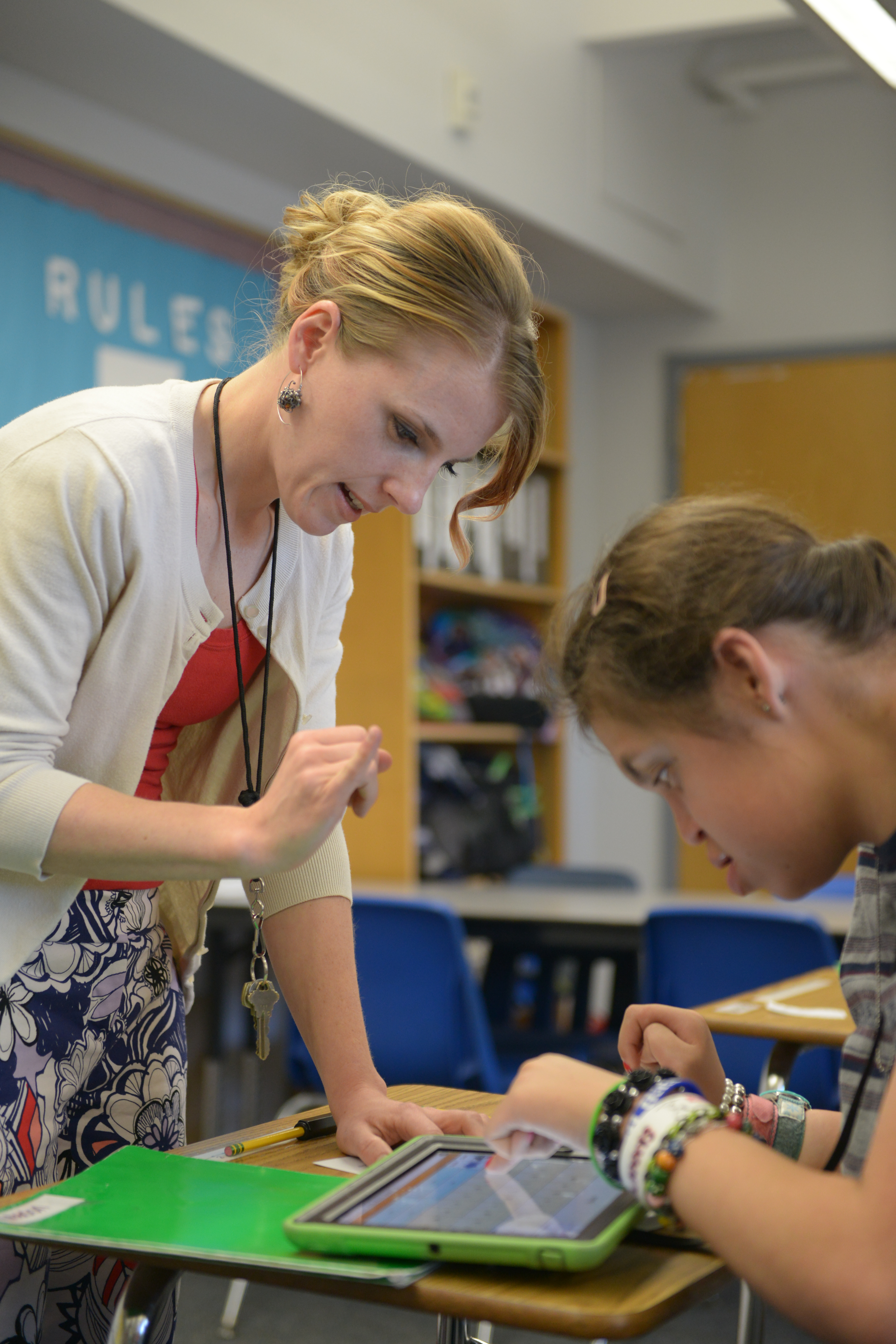This profile of an outstanding, innovative educator is part of the feature section “On the Leading Edge” in our annual Innovation Issue. Photos by Scott Buschman.
In Courtney Coffin’s special education classroom, students with moderate to severe disabilities are blogging and sending and receiving emails. It began when Chromebook computers were accidentally delivered to Coffin’s classroom. And she didn’t send them back.
She expected her students with moderate to severe disabilities at Orange Glen High School would make good use of them. She wasn’t disappointed.
 Coffin isn’t surprised that technology opens doors for students, by allowing them to communicate with one another and the world. Technology also prompts students to become more excited about learning and more focused. For example, students recently used their laptops to follow along with their teacher’s PowerPoint presentation on the Seven Wonders of the World.
Coffin isn’t surprised that technology opens doors for students, by allowing them to communicate with one another and the world. Technology also prompts students to become more excited about learning and more focused. For example, students recently used their laptops to follow along with their teacher’s PowerPoint presentation on the Seven Wonders of the World.
Coffin has fought to obtain communication devices for students unable to speak, and some of her students finally found their voice.
Maria uses a DynaVox speech generating device. “I want to buy a white prom dress with silver shoes,” she says, smiling from ear to ear.
The device allows educators to preprogram words that students can string together through touching the screen to create sentences and express themselves. Maria loves to tell people “You’re crazy” while laughing with good humor.
“Maria likes attention and socializing and talking about things that are important to her, like we all like to do,” says Coffin.
Devices are also preprogrammed with images for food and drink, social expressions like “What’s your name?” and “Hello,” and pictures of activities they would like to do and facial expressions to communicate feelings. There is even a photo of a bathroom so they can communicate personal needs. Email addresses are preprogrammed into their computers so they can communicate with their teacher, parents and friends throughout campus.
Being able to say “I’m hungry,” “What’s for lunch?” or “I like that” makes her students feel empowered and much happier.
“We have students with really challenging behavior issues,” says Coffin. “But better communication has helped with these challenges.”
She tailors curriculum and devices to meet the needs of individual students. For example, a student who has only the use of her elbow can communicate with an iPad Pro pencil and joystick, which Coffin obtained for her. The student immediately asked when she would be able to take a nap and have her hair done. Other students have special apps on their computers that convert text to speech and emails.
“We offer high expectations for students, and they meet them,” says Coffin, who teaches all academic subjects and life skills such as cooking. “These are things they will be able to do throughout their lives.”
Coffin uses video and YouTube to celebrate her students’ victories and individuality, showcasing their creativity and desire for independence. Students send parents screenshots of their work to show off their progress. (For a video of her classroom, visit bit.ly/2kUw5No.)
When word spread about the amazing things happening in Coffin’s room, others came in to observe. Many said they were surprised Room 200 seemed more like a typical classroom than a special education environment.
“Visitors walk in and say, ‘It’s really different in here,’” laughs Coffin, a member of the Escondido Secondary Teachers Association, who received the 2016 Inspire Award from her district. “Hopefully, it will be this way in all special education classes one day.”
The Discussion 0 comments Post a Comment